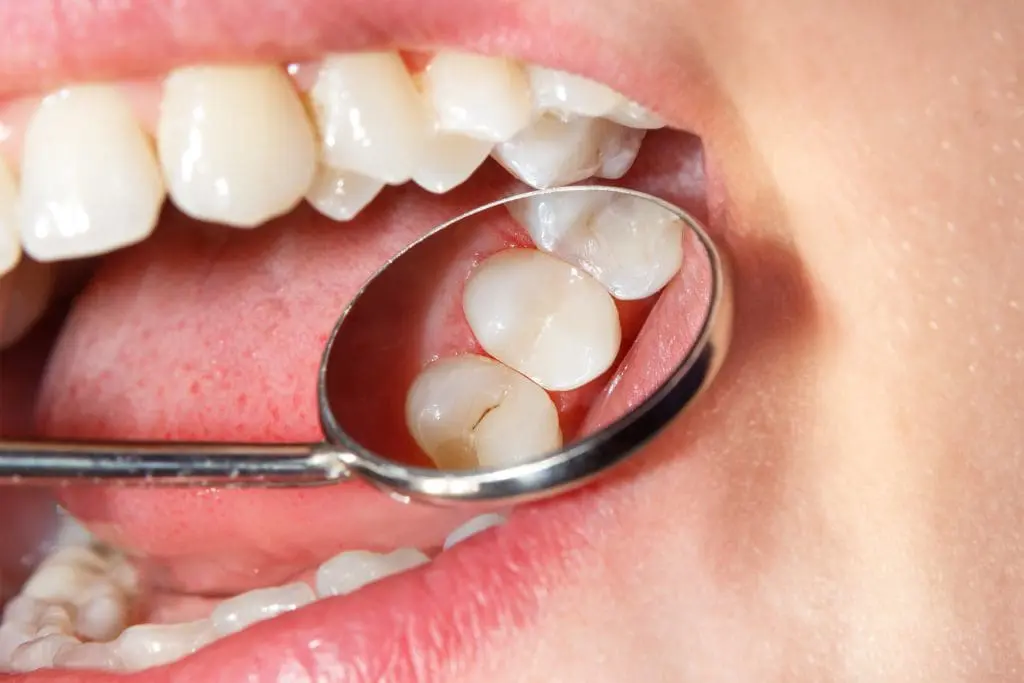The pursuit of optimal oral health often necessitates restorative treatments, with dental fillings standing as a cornerstone of modern dentistry. For many individuals, particularly those in the United Kingdom seeking both quality and value, Turkey has emerged as a premier destination for a wide array of dental procedures, including the various types of dental fillings. Understanding the available options is crucial for making informed decisions regarding your dental health.
Table of Contents
Understanding Dental Fillings: A Foundation for Oral Health
Maintaining the integrity of your teeth is paramount not only for chewing and speaking but also for overall health. Dental fillings serve as restorative materials used to repair teeth that have been damaged by decay, trauma, or wear.
What Are Dental Fillings?
Dental fillings are essentially materials used by dentists to fill cavities after removing decayed tooth structure. This process restores the tooth’s form, function, and integrity, preventing further decay and potential complications such as infection or tooth loss. The choice of material is influenced by factors such as the extent of the decay, the tooth’s location in the mouth, cost, and aesthetic considerations.
Why Are Fillings Necessary?
Dental cavities, if left untreated, can progressively worsen, leading to severe pain, infection, and even the need for more complex procedures like root canal treatment or tooth extraction. Fillings halt the progression of decay, seal off pathways for bacteria, and strengthen the compromised tooth structure, thereby preserving the natural tooth for years to come. They are a fundamental intervention in preventive and restorative Dental Care in Turkey and worldwide.
The Spectrum of Dental Filling Materials
Modern dentistry offers a diverse range of materials for dental fillings, each with its unique characteristics, advantages, and disadvantages. The selection depends on individual patient needs, budget, and the dentist’s professional recommendation.
Amalgam Fillings: Traditional Durability
Amalgam fillings, often referred to as silver fillings, have been a standard in dentistry for over a century. They are a mixture of mercury (approximately 50%), silver, tin, and copper. Their primary advantages include exceptional durability, high resistance to wear, and a relatively low cost. Amalgam fillings can withstand significant chewing forces, making them particularly suitable for molars and other posterior teeth where aesthetic concerns are less critical. However, their silver-grey appearance makes them conspicuous, and some patients express concerns about the mercury content, although extensive research by leading health organizations confirms their safety for dental use.
Composite Resin Fillings: Aesthetic and Versatile
Composite resin fillings are tooth-coloured restorations made from a mixture of plastic and fine glass particles. They are highly aesthetic, as they can be precisely matched to the natural shade of your teeth, making them virtually invisible. This aesthetic appeal makes them a popular choice for front teeth and visible areas. Beyond aesthetics, composite fillings bond directly to the tooth structure, providing support and often requiring less removal of healthy tooth material compared to amalgam. Recent advancements in dental materials have significantly enhanced the durability and wear resistance of composite resins. A systematic review published in the Journal of Dental Research highlighted that modern composite restorations, when correctly applied, demonstrate longevity comparable to amalgam fillings, particularly in posterior teeth. This research underscores the evolution of composite materials into a robust and reliable option, offering both aesthetic benefits and enduring functional performance.
Ceramic Fillings (Porcelain Inlays/Onlays): Strength and Aesthetics
Ceramic fillings, typically made from porcelain, are known for their superior aesthetics and strength. They are custom-made in a dental laboratory to perfectly fit the prepared tooth cavity, then bonded into place during a second appointment. These are often referred to as inlays (if they fit within the cusps of the tooth) or onlays (if they cover one or more cusps). Ceramic restorations are highly durable, resistant to staining, and offer an excellent natural appearance. Their main drawbacks are higher cost and the need for at least two dental visits. They are an excellent choice for larger restorations where strength and aesthetics are equally important.
Glass Ionomer Cements: Fluoride Release Benefits
Glass ionomer cements (GICs) are tooth-coloured materials composed of acrylic and fluoroaluminosilicate glass. A unique advantage of GICs is their ability to release fluoride over time, which can help prevent further decay around the filling. They are not as strong as composite or ceramic fillings and are more prone to wear, making them generally suitable for smaller, non-load-bearing restorations, primary (baby) teeth, or as temporary fillings. They are also useful for patients with a high risk of decay due to their fluoride-releasing properties.
Gold Fillings: Longevity and Biocompatibility
Gold fillings, while less common today due to their cost and metallic appearance, are considered one of the most durable and long-lasting filling materials. Gold is highly biocompatible, meaning it is well-tolerated by gum tissues, and does not corrode. Like ceramic fillings, gold fillings (often referred to as gold inlays or onlays) are custom-fabricated in a laboratory and then cemented into place. Their significant advantages are their exceptional longevity (often lasting 15-20 years or more) and strength, but these come with a premium price tag and distinctive visibility.
The Dental Filling Procedure: What to Expect
Regardless of the material chosen, the process for receiving a dental filling generally follows a predictable series of steps, ensuring comfort and effective restoration.
Consultation and Diagnosis
1. Initial Examination: Your dentist will conduct a thorough examination of your teeth, often using X-rays, to identify any cavities or areas of decay. This stage is crucial for an accurate diagnosis and determining the most appropriate type of Dental Filling in Turkey for your specific needs.
2. Discussion of Options: The dentist will discuss the different filling materials available, explaining their pros and cons, costs, and suitability for your situation. This allows you to make an informed decision.
Preparation of the Tooth
1. Local Anesthesia: To ensure your comfort, the area around the affected tooth will be numbed with a local anesthetic.
2. Decay Removal: The decayed portion of the tooth is carefully removed using specialized dental instruments. The goal is to eliminate all diseased tissue while preserving as much healthy tooth structure as possible.
3. Cavity Preparation: The remaining tooth structure is then shaped to create a clean, stable surface for the filling material to bond or fit into. This preparation varies slightly depending on the type of filling material being used.
Application of the Filling Material
1. Isolation: The tooth is often isolated with a dental dam to keep it dry and free from saliva, which is particularly important for composite and ceramic fillings.
2. Bonding Agent (for composite/ceramic): For composite and ceramic fillings, a special adhesive (bonding agent) is applied to the tooth surface to enhance the bond between the filling and the natural tooth.
3. Material Application: The chosen filling material is then carefully applied to the prepared cavity. For composite resins, the material is applied in layers and cured (hardened) with a special light. For amalgam, it’s packed directly into the cavity. Ceramic and gold fillings, being custom-made, are cemented into place.
Finishing and Polishing
1. Shaping and Contouring: Once the material is placed, the dentist will carefully shape and contour the filling to match the natural anatomy of your tooth and ensure proper bite alignment.
2. Polishing: The filling is then polished to create a smooth surface, which helps prevent plaque accumulation and ensures a comfortable feel.
Choosing the Right Filling for You
Selecting the ideal dental filling involves considering several factors beyond just the material itself. Your dentist will be your primary guide in this decision-making process.
Factors Influencing Your Decision
- Location of the Cavity: Posterior teeth (molars and premolars) require materials that can withstand significant chewing forces, while anterior teeth (incisors and canines) prioritize aesthetics.
- Extent of Decay: Smaller cavities may be suitable for composite or glass ionomer, while larger areas of decay might benefit from the strength of ceramic inlays/onlays or amalgam.
- Aesthetic Preference: If you desire a natural, tooth-coloured appearance, composite or ceramic fillings are the preferred choices.
- Cost Considerations: The price of fillings varies significantly by material. Patients often weigh the longevity and aesthetic benefits against the initial investment.
- Allergies or Sensitivities: Although rare, some individuals may have sensitivities to specific materials. Your dentist will assess this during your consultation.
Longevity and Maintenance of Dental Fillings
The lifespan of a dental filling depends on the material, the size of the filling, your oral hygiene habits, and your biting forces. Amalgam and gold fillings are known for their long durability, often lasting 10-15 years or more. Composite fillings typically last 5-10 years, while ceramic inlays/onlays can last 10-15 years. Glass ionomer cements generally have the shortest lifespan, around 3-5 years, due to their lower strength.
Proper oral hygiene, including regular brushing, flossing, and routine dental check-ups, is essential for extending the life of any dental filling. Avoiding excessive biting on hard foods and addressing issues like teeth grinding (bruxism) can also contribute significantly to their longevity.
Why Turkey Excels in Dental Filling Treatments
Turkey has solidified its reputation as a global leader in medical tourism, especially for dental procedures. Patients from the UK and beyond are increasingly choosing Turkey for their dental needs, driven by a compelling combination of quality, affordability, and a holistic patient experience.
Unmatched Quality and Expertise
Turkish dental clinics boast state-of-the-art facilities equipped with the latest dental technology, adhering to international standards of hygiene and patient care. Dentists in Turkey are highly qualified, often trained internationally, and bring extensive experience in various restorative procedures, including the placement of all types of dental fillings. Continuous professional development ensures that Turkish dentists remain at the forefront of dental innovation.
Significant Cost Advantages
One of the most compelling reasons for dental tourism to Turkey is the substantial cost savings without compromising on quality. The cost of dental treatments, including complex restorative work, is considerably lower than in many Western European countries, including the UK. This allows patients to access premium materials and advanced techniques at a fraction of the price.
| Service/Item | Turkey Price (GBP) | UK Price (GBP) |
|---|---|---|
| Amalgam Filling | £50 – £100 | £80 – £150 |
| Composite Filling | £80 – £200 | £150 – £350 |
| Glass Ionomer Filling | £70 – £150 | £120 – £250 |
| Ceramic Inlay/Onlay | £250 – £500 | £400 – £800 |
| Gold Filling | £400 – £800 | £800 – £1500 |
*Prices are approximate and can vary based on clinic, location, and case complexity.
State-of-the-Art Facilities
Turkish dental clinics prioritize patient comfort and safety, featuring modern infrastructure, advanced sterilization protocols, and cutting-edge diagnostic and treatment equipment. This commitment to technology ensures precise diagnoses and effective treatment outcomes for all dental filling in Turkey procedures.
Combining Treatment with Travel
Many international patients choose Turkey not only for its dental excellence but also for the opportunity to combine their treatment with a refreshing holiday. Cities like Antalya offer beautiful scenery, rich history, and vibrant culture, allowing patients to recover in a serene environment. To learn more about optimal times for travel, consider exploring the Antalya Climate: Optimal Seasons for Medical Travel.
CK Health Turkey: Your Partner for Dental Excellence
At CK Health Turkey, we pride ourselves on being a leading provider of comprehensive dental services for international patients. Our team of highly skilled and experienced dentists specializes in all types of dental fillings, utilizing the latest techniques and finest materials to ensure lasting results and exceptional aesthetics. We understand the nuances of international patient care, offering seamless travel arrangements, personalized treatment plans, and continuous support throughout your dental journey. Our commitment to transparency, quality, and patient satisfaction makes us the preferred choice for those seeking superior dental care in Turkey. We invite you to experience the difference that expert care, advanced technology, and genuine compassion can make for your smile. Contact us today for a consultation or visit our website to discover how we can help you achieve optimal oral health.
| Factor | Amalgam Fillings | Composite Resin Fillings | Ceramic (Inlay/Onlay) | Glass Ionomer Cements |
|---|---|---|---|---|
| Aesthetics | Poor (silver-grey) | Excellent (tooth-coloured) | Excellent (tooth-coloured) | Good (tooth-coloured) |
| Durability | Very High | High | Very High | Moderate |
| Cost | Low | Moderate | High | Low-Moderate |
| Application Time | Short | Moderate-Long | Long (2 visits) | Short |
| Biocompatibility | Good (some mercury concern) | Very Good | Excellent | Good (fluoride release) |
Choosing the right type of dental filling is a critical decision that impacts not only the health of your tooth but also your overall well-being and confidence. With the advanced options available in Turkey, combined with significant cost efficiencies, patients can access world-class restorative care. By understanding the distinct properties of each material and consulting with experienced dental professionals, you can make an informed choice that best suits your clinical needs, aesthetic desires, and budget. Turkey offers an unparalleled opportunity to restore your smile with precision, care, and outstanding value.
FAQs
How long do dental fillings last?
The lifespan of dental fillings varies by material. Amalgam and gold can last 10-15 years or more, composite typically 5-10 years, and ceramic inlays/onlays 10-15 years. Glass ionomer cements usually last 3-5 years.
Are dental fillings painful to get?
The procedure for receiving a dental filling is generally not painful as the area around the tooth is numbed with a local anesthetic. You might experience some sensitivity after the procedure, which usually subsides within a few days.
Can I eat immediately after getting a dental filling?
If you receive an amalgam filling, it’s generally recommended to wait a few hours before eating to allow it to fully set. For composite and glass ionomer fillings, which are cured immediately, you can typically eat right away, though it’s best to avoid very hard or sticky foods initially.
Are amalgam fillings safe, given the mercury content?
Extensive research by major health organizations, including the World Health Organization (WHO) and the American Dental Association (ADA), confirms that dental amalgam fillings are safe and effective for use. The mercury in amalgam combines with other metals to form a stable, safe material.
What is the difference between an inlay and an onlay?
Both inlays and onlays are custom-made indirect fillings, typically made from ceramic or gold. An inlay fits within the cusps (the chewing surfaces) of the tooth, while an onlay covers one or more of the cusps, extending over the biting surface.
How do I know which type of filling is right for me?
The best type of filling for you depends on several factors, including the location and size of the cavity, your aesthetic preferences, budget, and the dentist’s professional assessment. Your dentist will discuss all options and recommend the most suitable material during your consultation.
Can I change an old filling to a new type?
Yes, it is possible to replace old fillings with new ones, especially if they are damaged, failing, or if you desire a more aesthetic option like a tooth-coloured composite or ceramic filling. This procedure is common and can improve both the function and appearance of your tooth.




